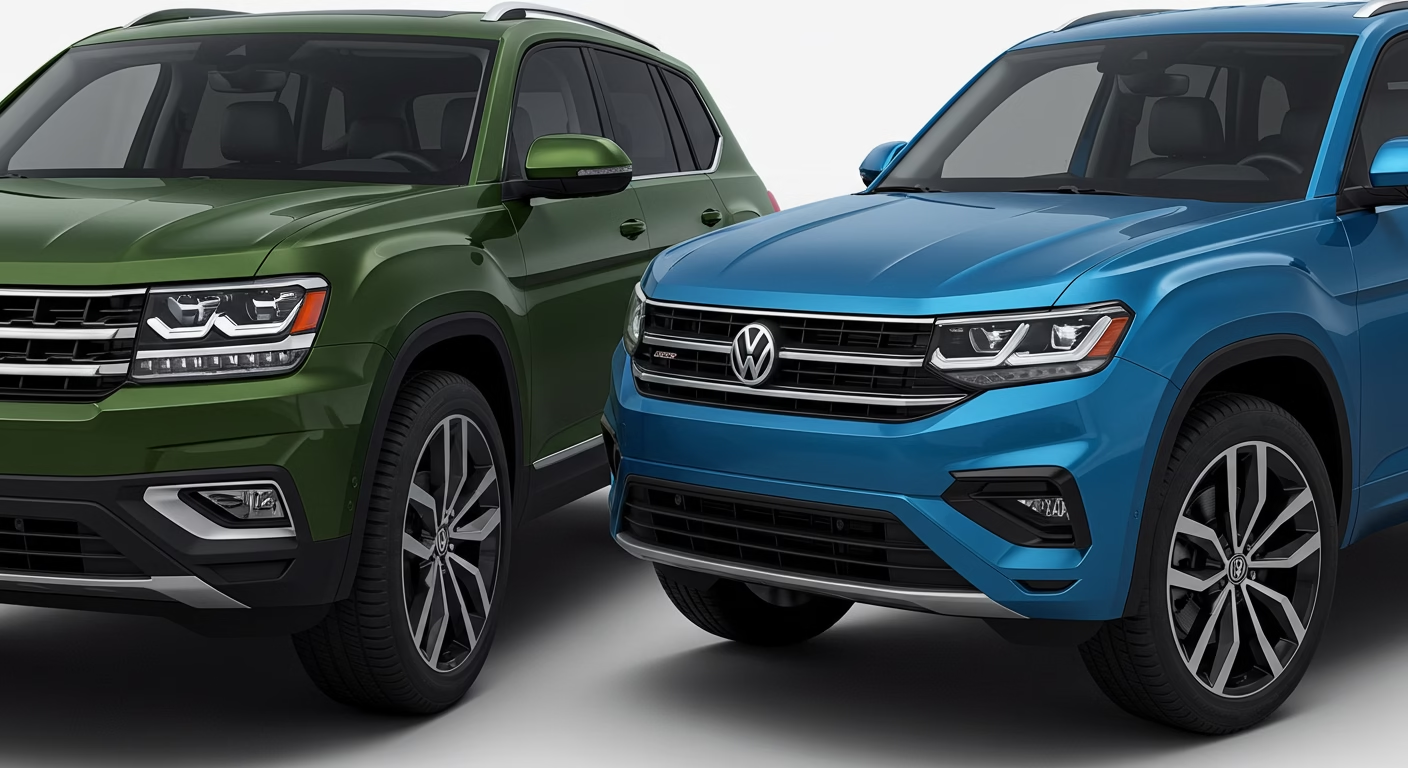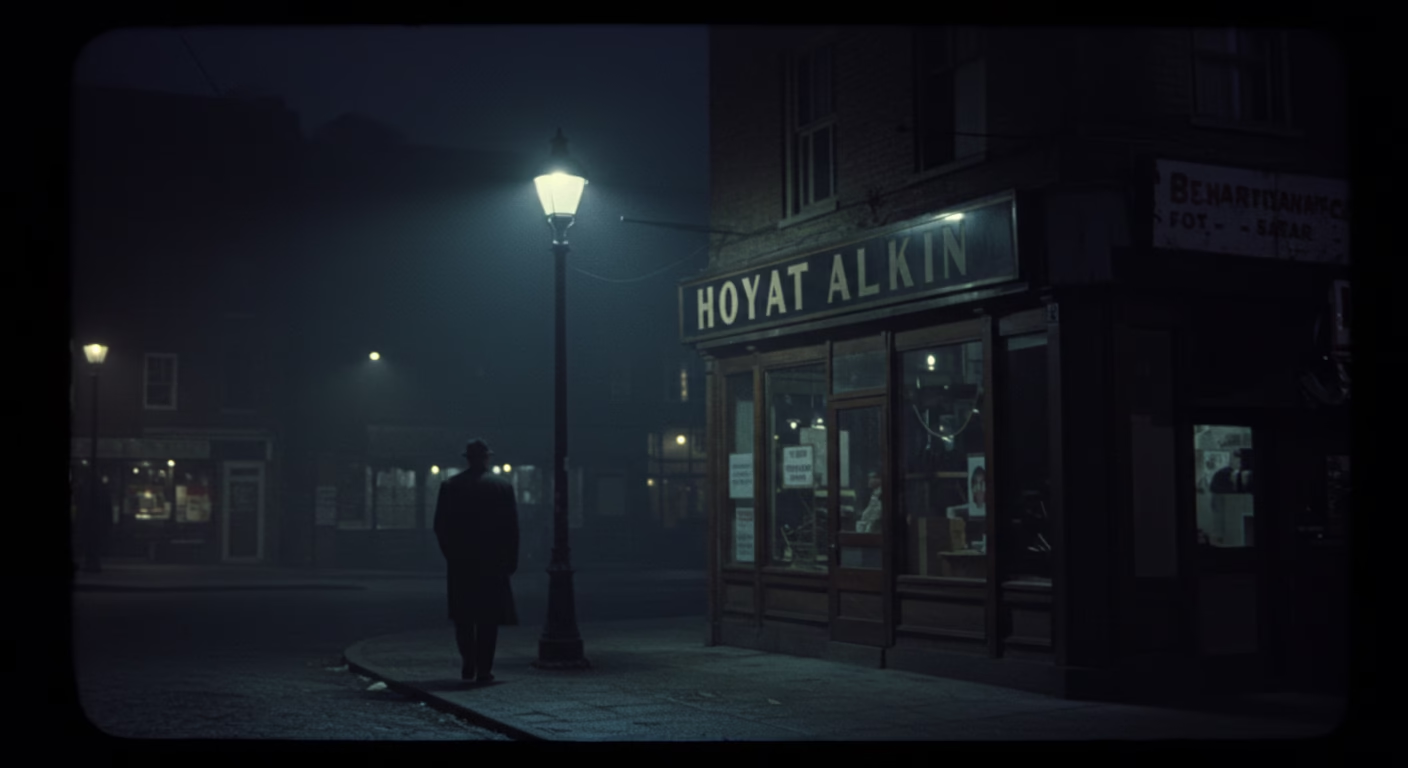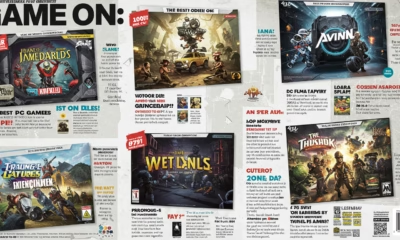ENTERTAINMENT
Volkswagen Atlas vs. Cross Sport: Key Differences

When Volkswagen introduced the Atlas in 2017, it marked the German automaker’s bold entry into the competitive three-row midsize SUV segment. Just three years later, VW expanded the lineup with the Atlas Cross Sport, a sleeker two-row variant designed to appeal to buyers who wanted Atlas DNA without the third-row commitment. Today, these siblings represent two distinct approaches to the midsize SUV formula, each with its own strengths and ideal buyer profiles.
In this comprehensive 1,400-word comparison, we’ll examine every critical aspect of these Volkswagen SUVs, from their exterior styling and interior accommodations to performance specs, technology offerings, and real-world usability. Whether you’re a growing family needing maximum space or a style-conscious couple prioritizing driving dynamics, this guide will help you determine which Atlas model deserves a spot in your driveway.
Under the Skin: Platform and Dimensions
Both vehicles share Volkswagen’s modular MQB platform, which also underpins models like the Tiguan and even the Audi Q7. This shared architecture means they benefit from similar structural engineering, suspension layouts, and manufacturing efficiencies. However, their differing body styles result in significant dimensional variations:
-
Length: Atlas 200.7″ vs. Cross Sport 195.5″
-
Height: Atlas 70.4″ vs. Cross Sport 68.3″
-
Wheelbase: Both at 117.3″
-
Curb Weight: Atlas 4,343-4,532 lbs vs. Cross Sport 4,233-4,498 lbs
The Cross Sport’s 5.2-inch shorter length and 2.1-inch lower roofline give it noticeably different proportions, contributing to its sportier aesthetic and slightly improved aerodynamics. Interestingly, both models share the same wheelbase, which helps maintain interior space in the first two rows.
Exterior Design: Traditional SUV vs. Sporty Crossover
The standard Atlas presents a classic, upright SUV profile with:
-
Bold horizontal grille bars
-
Squared-off wheel arches
-
Straight roof line for maximum headroom
-
Tall greenhouse for excellent visibility
By contrast, the Atlas Cross Sport adopts a more contemporary crossover look featuring:
-
Fastback-style rear roofline
-
More aggressive front fascia
-
Tapered rear quarter windows
-
Standard LED lighting (on higher trims)
Design preferences will be subjective, but the Cross Sport undoubtedly makes the stronger visual statement while the standard Atlas prioritizes function over form. Both offer attractive wheel options ranging from 18 to 21 inches, with the larger diameters better complementing each vehicle’s proportions.
Powertrain and Performance Comparison
Volkswagen offers both models with identical engine choices:
2.0L Turbocharged 4-cylinder:
-
235 horsepower @ 4,500 rpm
-
258 lb-ft torque @ 1,600 rpm
-
EPA Estimate: 20-21 mpg city/24-25 mpg highway
3.6L VR6:
-
276 horsepower @ 6,200 rpm
-
266 lb-ft torque @ 2,750 rpm
-
EPA Estimate: 17-18 mpg city/23-24 mpg highway
Both engines pair with an 8-speed automatic transmission and offer front-wheel or 4Motion all-wheel drive. The Cross Sport’s slight weight advantage (about 100 lbs lighter) gives it marginally better acceleration, though neither model could be considered quick—the 4-cylinder especially feels strained when loaded with passengers and cargo.
Towing capacity stands at 2,000 lbs for 4-cylinder models and 5,000 lbs for VR6-equipped vehicles across both lineups. The Cross Sport’s slightly shorter overhangs might provide a minor advantage when maneuvering trailers.
Interior Space and Practicality
This is where the two models diverge most significantly. The standard Atlas’s boxier shape pays dividends in interior volume:
Seating Capacity:
-
Atlas: 7 (standard) or 8 (with second-row bench)
-
Cross Sport: 5 (no third-row option)
Cargo Space (Behind Front Row):
-
Atlas: 96.8 cubic feet
-
Cross Sport: 77.8 cubic feet
Third-Row Access:
The Atlas features an innovative second-row tip-and-slide mechanism that makes third-row access easier than in many competitors. The Cross Sport obviously forgoes this feature entirely.
Real-World Usability:
-
The Atlas’s third row accommodates adults up to 5’8″ reasonably well for short trips
-
Cross Sport second-row passengers enjoy more legroom (37.6″ vs. 33.7″ in Atlas third row)
-
Atlas offers 20.6 cu-ft behind third row vs. Cross Sport’s 40.3 cu-ft behind second row
Technology and Infotainment
Both SUVs feature Volkswagen’s latest MIB3 infotainment system with:
-
Standard 8″ touchscreen (12″ upgrade available)
-
Wireless Apple CarPlay/Android Auto
-
Available 10.25″ Digital Cockpit display
-
Optional Fender premium audio system
The Cross Sport receives some additional standard tech features on comparable trims, likely as a way to enhance its premium positioning. Both suffer from VW’s sometimes-frustrating touch-sensitive climate controls that replaced physical knobs in recent updates.
Safety and Driver Assistance
Volkswagen’s IQ.DRIVE suite comes standard on both models, including:
-
Forward Collision Warning with Autonomous Emergency Braking
-
Pedestrian Monitoring
-
Blind Spot Monitor with Rear Traffic Alert
-
Lane Keeping System
Higher trims add:
-
Adaptive Cruise Control
-
Park Distance Control
-
Area View Camera System
The Atlas’s boxier design actually provides slightly better outward visibility, particularly to the rear quarters where the Cross Sport’s styling compromises some sight lines.
Pricing and Value Proposition
Here’s how the lineups compare for 2024 models:
Atlas Trim Levels:
-
S: $35,000
-
SE: $38,500
-
SE w/ Technology: $41,000
-
SEL: $44,000
-
SEL Premium: $50,000
Atlas Cross Sport Trims:
-
S: $34,000
-
SE: $37,500
-
SE w/ Technology: $40,000
-
SEL: $43,000
-
SEL Premium R-Line: $49,000
The Cross Sport typically commands about 1,000−1,500 less than comparable Atlas trims, reflecting its simpler seating configuration. Both offer strong value compared to competitors like the Honda Pilot or Hyundai Palisade, though resale values trail those Japanese and Korean rivals.
Driving Dynamics and Comfort
On the road, the differences become more apparent:
-
The Atlas feels more substantial and stable at highway speeds
-
Cross Sport exhibits slightly more body roll in corners
-
Both suffer from numb steering feel common in the segment
-
Atlas’s longer wheelbase provides a smoother ride over broken pavement
Neither model excels in driving excitement, but the Cross Sport’s slightly reduced weight and lower center of gravity give it a minor advantage in handling responsiveness. Road noise is well-controlled in both, with the Atlas perhaps having a slight edge in sound deadening.
Which Buyers Should Choose Which Model?
The Standard Atlas is Ideal For:
-
Families requiring third-row seating
-
Buyers who frequently transport large or bulky items
-
Those prioritizing maximum interior volume
-
Drivers who prefer traditional SUV proportions
The Cross Sport Makes More Sense For:
-
Households that never use a third row
-
Buyers who prefer stylish exterior design
-
Urban drivers who appreciate slightly easier parking
-
Those wanting marginally better fuel economy
The Verdict: Two Approaches to the Midsize SUV Formula
After examining every angle, our recommendation comes down to one simple question: Do you need a third row?
If the answer is yes, the standard Atlas remains one of the most spacious and family-friendly options in its class. If not, the Cross Sport offers nearly all the Atlas’s virtues in a more stylish package with some small dynamic advantages.
Both models benefit from Volkswagen’s strong warranty coverage (4-year/50,000-mile bumper-to-bumper, 6-year/72,000-mile powertrain) and the brand’s improving dealer network. While neither represents the cutting edge of automotive technology or performance, they deliver exactly what most midsize SUV buyers want: dependable transportation with plenty of space and features at a competitive price.
For shoppers considering alternatives, we’d recommend test driving the Honda Pilot for its superior powertrain, the Hyundai Palisade for its luxury touches, or the Mazda CX-90 for those prioritizing driving dynamics. But for pure interior space (Atlas) or distinctive styling (Cross Sport), these Volkswagen twins remain compelling choices in the crowded midsize SUV segment.
ENTERTAINMENT
The Rise of 5th-Gen K-Pop: A New Era of Global Domination

The K-pop industry is constantly evolving, and with the rise of 5th-generation (5th-gen) groups, the global music scene is witnessing a fresh wave of talent, innovation, and record-breaking success. As 4th-gen groups like ENHYPEN, ITZY, Stray Kids, and IVE continue to dominate, a new batch of artists—BabyMonster, KISS OF LIFE, ZEROBASEONE, ILLIT, BOYNEXTDOOR, TWS, UNIS, and HEARTS2HEARTS—are carving their own paths with unique concepts, powerful performances, and next-level fan engagement.
In this article, we explore the defining traits of 5th-gen K-pop, the standout groups leading the charge, and what sets them apart in an increasingly competitive industry.
What Defines 5th-Gen K-Pop?
While there’s no official start date for the 5th generation, many fans and industry experts consider 2023–2024 as the beginning, marked by:
- Hyper-Globalization: Groups are debuting with multilingual members and targeting global markets from day one.
- AI & Tech Integration: AI-generated content, virtual avatars , and metaverse concerts are becoming standard.
- Short-Form Content Domination: TikTok and YouTube Shorts play a crucial role in viral success.
- Stronger Self-Production: More idols are involved in songwriting, producing, and creative direction.
- Hybrid Concepts: Blending multiple genres (K-pop, hip-hop, EDM, rock) and storytelling through music.
Now, let’s dive into the hottest 5th-gen groups making waves.
1. BABYMONSTER (YG Entertainment) – The Reborn Monster Rookies
Debut: 2024 (First Mini Album BABYMONS7ER) | Members: 7 (Ahyeon, Haram, Rora, Chiquita, Pharita, Ruka, Asa)
After generating massive hype with their pre-release single “BATTER UP” in 2023, BABYMONSTER officially debuted in 2024 with their first mini album BABYMONS7ER solidifying their place as YG Entertainment’s next powerhouse girl group. Originally introduced as a six-member act, the group’s final lineup expanded to seven with the return of Ahyeon, completing their full roster.
Why They Stand Out:
- Global lineup (Thailand, Japan, South Korea)
- Vocal powerhouses (Haram, Ahyeon, Rora, Pharita and Chiquita) and rap prodigies (Ruka, Asa)
- YG’s signature badass concept with a modern twist
2. KISS OF LIFE (S2 Entertainment) – The Self-Producing Queens
Debut: 2023 | Members: 4 (Julie, Natty, Belle, Haneul)
KISS OF LIFE is redefining independence in K-pop, with members heavily involved in writing and producing their music. Former Sixteen (JYP trainee) contestant Natty leads the group, bringing years of experience.
Why They Stand Out:
- Strong R&B and hip-hop influences (Tracks like “Shhh” and “Bad News”)
- Live vocals and raw performances—no lip-syncing!
- Mature, confident concept compared to many rookie groups
3. ZEROBASEONE (WakeOne Entertainment) – The Record-Breaking Kings
Debut: 2023 | Members: 9 (Zhang Hao, Sung Hanbin, Kim Jiwoong, Seok Matthew, Kim Taerae, Ricky, Kim Gyuvin, Park Gunwook, Han Yujin)
Formed from Mnet’s survival show Boys Planet, ZEROBASEONE (ZB1) shattered records with their debut album “YOUTH IN THE SHADE”, selling over 2 million copies—the highest for any K-pop debut.
Why They Stand Out:
- Elegant, fantasy-like concept (Tracks like “In Bloom”)
- Global fandom (Kep1er’s successor)
- Strong synchronization and vocal harmony
4. ILLIT (BELIFT LAB) – HYBE’s Next Big Thing
Debut: 2024 | Members: 5 (Yunah, Minju, Moka, Wonhee, Iroha)
Produced by HYBE (BTS’s label) and CJ ENM, ILLIT is following in the footsteps of NewJeans with a youthful, dreamy aesthetic. Their debut “Magnetic” went viral on TikTok, proving HYBE’s mastery of trendy, earworm music.
Why They Stand Out:
- Minimalist, Y2K-inspired fashion
- Addictive, easy-listening pop sound
- Strong social media presence
5. BOYNEXTDOOR (KOZ Entertainment) – Zico’s Hip-Hop Prodigies
Debut: 2023 | Members: 6 (Jaehyun, Sungho, Riwoo, Taesan, Leehan, Woonhak)
Under Zico’s label (KOZ Entertainment, a HYBE subsidiary), BOYNEXTDOOR brings a fresh, playful hip-hop vibe reminiscent of early BTS and Block B. Their tracks “One and Only” and “But Sometimes” showcase their laid-back yet charismatic energy.
Why They Stand Out:
- Self-written raps and lyrics
- Retro, street-style visuals
- Zico’s direct influence in production
6. TWS (PLEDIS Entertainment) – The New Emotional Pop Icons
Debut: 2024 | Members: 6
As SEVENTEEN’s younger brother group, TWS (pronounced “Twice”) focuses on emotional, relatable pop music. Their debut “plot twist” blends soft melodies with heartfelt lyrics, appealing to fans of TXT and ENHYPEN.
Why They Stand Out:
- Bright, sentimental concept
- Strong vocal and dance balance
- PLEDIS’s signature performance style
7. UNIS – The Survival Show Superstars
Debut: 2024 | Members: 8 (From Universe Ticket)
Formed through SBS’s survival show Universe Ticket, UNIS is a multinational girl group with a fresh, energetic concept. Their debut “SUPERWOMAN” highlights their powerful vocals and dynamic choreography.
Why They Stand Out:
- Diverse international lineup
- High-energy performances
- Fan-driven formation (like IZ*ONE)
8. HEARTS2HEARTS – The Underrated Vocal Powerhouses
Debut: 2025 | Members: 8
A new girl group gaining attention for their stunning vocal abilities, HEARTS2HEARTS is being compared to early MAMAMOO for their live-singing prowess.
Why They Stand Out:
- Focus on live vocals over heavy production
- Soulful, jazz-influenced sound
Conclusion: The Future of K-Pop is Here
The 5th generation of K-pop is breaking boundaries with global appeal, self-production, AI integration, and genre-blending sounds. From BABYMONSTER’s YG swag to HEARTS2HEARTS , these groups are redefining what it means to be a K-pop idol.
Which 5th-gen group is your favourite? With such fierce competition, one thing is clear—K-pop’s global dominance is only getting stronger.
ENTERTAINMENT
The Ultimate Guide to New Entertainment Trends in 2025

As we enter 2025, the entertainment industry is undergoing radical transformation, primarily due to rapid tech advancements. Not only are AI-generated films emerging, but VR experiences also offer unprecedented immersion. Meanwhile, interactive storytelling now allows viewers to shape narratives, thereby revolutionizing engagement. While these innovations excite audiences, they simultaneously challenge traditional media models. For instance, streaming platforms must now adapt or risk obsolescence. Consequently, content creators who embrace these trends will likely thrive, whereas those resisting change may fall behind. Ultimately, this evolution promises more personalized, dynamic entertainment for global audiences.
Whether you create, market, or simply love entertainment, understanding 2025’s trends isn’t just helpful—it’s essential. That’s why, in this guide, we’ll first explore AI’s role, then examine VR’s rise, and later analyze interactive content. Additionally, we’ll cover NFTs, while revealing sustainability shifts, before finally predicting what’s next. So, if you’re ready to future-proof your strategy, let’s dive right in.
- The Rise of AI in Entertainment
- Virtual Reality (VR) & Augmented Reality (AR) Domination
- Interactive & Choose-Your-Own-Adventure Content
- The Boom of Short-Form & Micro-Content
- Blockchain & NFTs in Media Monetization
- Hyper-Personalized Streaming Experiences
- Live, Social, and Community-Driven Entertainment
- Sustainability in Entertainment Production
- The Future of Gaming & Esports
- What’s Next? Predictions Beyond 2025
Let’s dive in!
1. The Rise of AI in Entertainment
Now in 2025, AI has fully transformed entertainment, shifting from futuristic theory to everyday reality. From scriptwriting to deepfake actors, it not only enhances creativity but also redefines production. Thus, what seemed impossible is now mainstream, proving AI’s revolutionary role in modern media.
How AI is Changing the Game:
- AI-Generated Scripts & Music: Tools like ChatGPT-5 and Soundraw create scripts, songs, and even full movies.
- Deepfake & Synthetic Actors: AI-generated actors reduce production costs and bring historical figures back to life.
- Personalised Content Recommendations: Streaming platforms use AI to curate hyper-specific watchlists.
Challenges:
- Ethical concerns (Who owns AI-created content?)
- Job displacement (Will AI replace human creatives?)
2. Virtual Reality (VR) & Augmented Reality (AR) Domination
No longer confined to gaming, VR and AR are now revolutionizing mainstream entertainment. From virtual concerts to AR-enhanced sports broadcasts, these technologies not only create immersive experiences but also open new revenue streams. As a result, 2025 marks the year when extended reality finally enters everyday entertainment.
Key Trends:
- Metaverse Concerts: Artists like Travis Scott and Ariana Grande host virtual shows with interactive avatars.
- AR-Enhanced Sports: Real-time stats and 3D replays enhance live sports viewing.
- VR Cinema: Netflix and Disney+ experiment with 360° movie experiences.
Why It Matters:
- More immersive storytelling
- New revenue streams (virtual tickets, NFT collectibles)
3. Interactive & Choose-Your-Own-Adventure Content
Today’s audiences demand more than passive viewing—instead, they crave narrative control. Through interactive streaming, for example, viewers not only choose plot directions but also influence endings in real-time. Similarly, gaming-TV hybrids now let fans decide character fates. Consequently, 2025 entertainment isn’t just watched—it’s co-created.
Examples in 2025:
- Netflix’s “Bandersnatch 2.0” – More complex branching narratives.
- AI-Powered Interactive Podcasts – Listeners influence the storyline in real time.
- Gaming-Streaming Hybrids – Twitch audiences vote on in-game decisions.
The Appeal:
- Higher engagement
- Repeat consumption (users re-watch to explore different endings)
4. The Boom of Short-Form & Micro-Content
As attention spans shrink, short-form content now dominates digital entertainment. Platforms like TikTok, Instagram Reels, and YouTube Shorts not only thrive but also reshape viewing habits. Consequently, traditional media must adapt or risk losing relevance. Thus, 2025’s entertainment landscape is increasingly snackable, viral, and mobile-first.
Trends to Watch:
- 15-Second Movies: Platforms like Quibi (revived in 2025) offer ultra-short premium content.
- AI-Curated Clips: Apps auto-edit long videos into viral highlights.
- Vertical Streaming: Disney+ and HBO Max introduce mobile-first vertical shows.
Why It Works:
- Faster consumption
- Higher shareability
5. Blockchain & NFTs in Media Monetization
In 2025, Hollywood and musicians are not just adopting NFTs—they’re revolutionizing ownership. Through blockchain, artists now tokenize everything from movie rights to concert tickets, giving fans true digital ownership. Meanwhile, studios use NFTs to fund projects and reward superfans. Ultimately, this shift proves Web3 is here to stay.
How It’s Used:
- NFT Movie Tickets: Exclusive perks for NFT holders (e.g., behind-the-scenes access).
- Fan Tokenisation: Artists like Taylor Swift sell digital collectibles tied to albums.
- Decentralised Streaming: Platforms like Audius reward creators directly via crypto.
Pros & Cons:
✅ New revenue models
❌ Market volatility risks
6. Hyper-Personalized Streaming Experiences
Today, streaming platforms no longer offer one-size-fits-all content—instead, every viewer gets a personalized feed. Using AI algorithms, services like Netflix not only curate recommendations but also generate custom trailers. As a result, 2025’s entertainment isn’t just watched—it’s uniquely crafted for each user.
Innovations in 2025:
- AI-Generated Custom Trailers – Netflix edits previews based on your watch history.
- Mood-Based Playlists – Spotify and Disney+ suggest content based on your emotions.
- Localised Content – Regional AI dubs movies in your dialect instantly.
Impact:
- Higher retention rates
- More subscription loyalty
7. Live, Social, and Community-Driven Entertainment
Now in 2025, social platforms aren’t just for connection—they’ve become full-fledged entertainment hubs. For example, TikTok Live and Instagram’s Reels not only host viral challenges but also premiere exclusive shows. Similarly, YouTube’s community polls let audiences shape content in real-time. Thus, the divide between socializing and consuming entertainment has virtually disappeared.
Trending Formats:
- Live Shopping Shows – Amazon and TikTok merge shopping with entertainment.
- Watch Parties – Discord and Meta integrate synchronised streaming.
- Crowdsourced Content – Fans vote on plot twists in real time.
Why Audiences Love It:
- Real-time interaction
- Stronger fan-creator bonds
8. Sustainability in Entertainment Production
Now Hollywood isn’t just cutting carbon—it’s pioneering sustainable entertainment. From solar-powered film sets to Netflix’s carbon-neutral streaming, studios not only reduce waste but also appeal to eco-conscious viewers. Meanwhile, blockchain tools like green NFTs help offset emissions. Ultimately, 2025 proves entertainment can dazzle while protecting the planet.
2025 Initiatives:
- AI-Powered Energy Optimisation – Reduces power usage in data centres.
- Virtual Production – LED stages replace location shoots (saves travel emissions).
- NFT Carbon Offsets – Studios invest in green NFTs to balance footprints.
The Big Shift:
- Consumers prefer eco-conscious brands
- Governments enforce green filming laws
9. The Future of Gaming & Esports
In 2025, gaming has not only dethroned movies and music but also redefined entertainment. With $200B+ revenue, it’s now the undisputed leader. From cloud gaming to esports betting, every sector thrives. Meanwhile, AI-powered NPCs and metaverse concerts further blur industry lines. Consequently, developers who embrace these trends will dominate, while traditional media scrambles to adapt. Indeed, playtime is now prime time.
2025 Gaming Trends:
- Cloud Gaming Dominance – Xbox Cloud, PlayStation Now, and Netflix Gaming expand.
- AI Game Masters – NPCs with ChatGPT-like dialogue adapt to players.
- Esports Betting Boom – Crypto and NFT integration in competitive gaming.
Why It’s Unstoppable:
- Cross-media integration (Fortnite concerts, Netflix game adaptations)
- $200B+ industry revenue
10. What’s Next? Predictions Beyond 2025
- Brain-Computer Interface (BCI) Entertainment – Think it, watch it.
- Holographic Performances – Dead musicians “live” on stage via holograms.
- AI-Generated Celebrities – Virtual influencers with million-dollar brand deals.
Next-Gen Entertainment Unleashed
As we enter 2025, the entertainment industry has become dramatically more dynamic, personalised, and technology-powered than ever before. Not only are AI-generated films becoming mainstream, but metaverse concerts are also redefining live experiences. Ultimately, the sector’s evolution centres around three key pillars: engagement, immersion, and interactivity.
To begin with, engagement has transformed through social viewing experiences. For instance, platforms now integrate live chat functions while streaming content, thereby creating shared viewing moments. Similarly, interactive storytelling allows audiences to influence narratives in real time, which significantly boosts retention rates.
When it comes to immersion, advancements like VR concerts and AR-enhanced sports have taken experiences to unprecedented levels. Specifically, 360-degree cinema enables viewers to step inside films, whereas holographic performances bring departed artists back to the stage. Consequently, the line between physical and digital entertainment continues to blur.
Conclusion
When it comes to interactivity, choose-your-own-adventure storytelling has not only moved past basic decision trees but also embraced AI-driven complexity. Now, platforms like Netflix and Twitch allow viewers to shape narratives in real-time, while AI generates dynamic endings. Meanwhile, gaming hybrids further blur lines, letting audiences control characters directly. As a result, passive watching declines, whereas co-created entertainment thrives. Ultimately, 2025’s stories aren’t just told—they’re lived.
Now, AI-powered systems can generate endless story variations based on viewer choices. Moreover, gaming-streaming hybrids let audiences participate in gameplay decisions, thus creating truly collaborative entertainment.
Looking ahead, these trends will likely accelerate as 5G connectivity improves and AI becomes more sophisticated.While digital privacy and content moderation pose real challenges, the truth is 2025’s entertainment landscape no longer revolves around passive viewing. Instead, audiences now demand active participation, whether through interactive stories, VR experiences, or AI-driven personalization. Thus, the industry must prioritize safety while delivering immersive, user-driven journeys.
In summary, whether through AI customisation, metaverse events, or interactive narratives, the industry is delivering unprecedented value to audiences worldwide. As a result, creators who embrace these innovations will lead the next era of digital entertainment.
Key Takeaways:
✔ AI is reshaping content creation and curation.
✔ VR/AR and interactive media are the new norms.
✔ Short-form and personalised content dominate attention.
✔ Blockchain and sustainability are changing business models.
✔ Gaming and live social experiences lead growth.
Which trend excites you the most?
ENTERTAINMENT
Hoyatalkin: Exploring the Meaning and Impact of a Modern Phenomenon

Introduction
Internet culture constantly births new slang, and “Hoyatalkin” has recently emerged as a viral phrase across social media and meme communities. While its exact definition remains fluid—possibly blending “hoya” with casual speech—its rapid adoption reveals much about digital communication trends.
This exploration unpacks “Hoyatalkin’s” potential meanings, from a playful greeting (“Hey, you talking?”) to insider lingo within specific online subcultures. More importantly, its spread demonstrates how platforms like TikTok and Twitter accelerate linguistic evolution, transforming niche phrases into shared digital vocabulary almost overnight.
For Gen Z and millennial users, such terms serve dual purposes: creating belonging through shared language while maintaining the humour and spontaneity that define online interaction. As we analyse “Hoyatalkin,” we’re really studying how internet culture reinvents communication—one viral phrase at a time.
What Does “Hoyatalkin” Mean?
The term “Hoyatalkin” appears to be a playful, slang-based expression, possibly derived from a blend of words or a phonetic reinterpretation of a phrase. Several interpretations exist:
- “Hey, you talking?” – It could be a casual, slurred way of asking someone if they are speaking or engaging in conversation.
- “Hoya” + “Talkin'” – “Hoya” might refer to a group (like the “Hoya” nickname for Georgetown University students) combined with “talkin'” to imply group discussion.
- Internet Slang & Meme Culture – Like many online phrases, “Hoyatalkin” may have originated from a viral meme, TikTok trend, or a misinterpretation that gained popularity.
Without a definitive origin, the term thrives on ambiguity, allowing users to adapt it creatively in different scenarios.
The Role of Slang in Digital Communication
Slang terms like “Hoyatalkin” highlight how internet culture accelerates linguistic evolution. Here’s why such phrases catch on:
1. Informal and Relatable
Online communication favours brevity and humour. Words that sound catchy or funny spread quickly, especially when they fill a linguistic gap.
2. Community and Identity
Slang often emerges within specific groups (gamers, social media influencers, subcultures) and serves as an insider code, strengthening group identity.
3. Meme-Driven Virality
Many slang terms originate from memes, videos, or misheard phrases. Once a term gains momentum on platforms like TikTok or Twitter, it becomes part of mainstream digital dialogue.
How “Hoyatalkin” is Used in Conversations
The flexibility of “Hoyatalkin” allows it to fit various contexts:
- As a greeting:
“Hoyatalkin? What’s good?” (Similar to “What’s up?”) - In Group Chats:
“Hoyatalkin about the game last night?” - As a Reaction Meme:
A humorous response to someone saying something unexpected.
Its adaptability makes it a versatile addition to internet slang.
The Linguistic Evolution of Internet Slang
“Hoyatalkin” fits into a broader trend of linguistic creativity online. Other examples include:
- “Sus” (From “suspicious,” popularized by Among Us)
- “Yeet” (A versatile exclamation)
- “No Cap” (Meaning “no lie”)
These terms often start in niche communities before spreading widely, demonstrating how digital platforms democratise language.
Why “Hoyatalkin” Resonates with Gen Z and Millennials
Younger generations dominate internet culture, and their communication style prioritises:
- Speed: Short, snappy phrases convey meaning quickly.
- Humour: playful language makes interactions more engaging.
- Exclusivity: Using niche slang creates a sense of belonging.
“Hoyatalkin” fits this mould, making it appealing to digital natives.
The Future of “Hoyatalkin” and Similar Terms
Will “Hoyatalkin” stand the test of time, or will it fade like many fleeting slang words? Its longevity depends on:
- Continued Usage – If influencers and meme pages keep using it, it may persist.
- Adaptability – Can it evolve into new meanings?
- Cultural Embedding – Will it move beyond the internet into everyday speech?
Some slang terms (like “LOL” or “GOAT”) become permanent, while others disappear as trends shift.
Conclusion
“Hoyatalkin” perfectly captures the dynamic nature of internet slang—fluid, community-driven, and constantly evolving. Although its exact meaning may vary, its widespread use highlights how digital communication encourages creativity and connection. As technology advances, we’ll undoubtedly see more terms like this emerge, reshaping online interactions. Whether “Hoyatalkin” endures or fades, it ultimately reflects the playful, adaptive essence of how we communicate today.
Final Thoughts
Next time you see “Hoyatalkin” in a meme or chat, first, consider how it reflects the fast-paced, ever-changing world of internet culture. Initially, slang like this may seem trivial, but it actually carries deeper meaning. For example, it isn’t just about words—rather, it’s about identity, humour, and the shared experience of navigating the digital age. Moreover, such terms evolve quickly, so they highlight how language adapts to new trends. Additionally, they create a sense of belonging; those who understand them feel part of an inside joke. Furthermore, internet slang often spreads rapidly, thanks to platforms like TikTok and Twitter. In contrast, older generations might find it confusing, yet for younger users, it’s a natural part of communication. Ultimately, whether “Hoyatalkin” sticks around or fades, meanwhile, it demonstrates the playful creativity of online interactions. Therefore, the next time you encounter a new slang term, instead of dismissing it, consider its role in shaping modern dialogue.
-

 EDUCATION1 month ago
EDUCATION1 month agoJollyJerk.com: The Curious Case of an Internet Alias and Its Cultural Significance
-

 EDUCATION1 month ago
EDUCATION1 month agoQawerdehidom: Origins, Principles, and Modern Applications
-

 BLOG2 months ago
BLOG2 months ago“Teenthailand_11_SC1: Unveiling Thailand’s Youth Culture”
-

 BLOG2 months ago
BLOG2 months agoTheapknews.shop Health: Your Gateway to Wellness and Tech
-

 ENTERTAINMENT2 months ago
ENTERTAINMENT2 months agoWhat Are Coachella Co-Chairs: The Visionaries Behind the Iconic Festival
-

 BLOG1 month ago
BLOG1 month agoSmall Warehouse for Rent: A Comprehensive Guide
-

 BLOG2 months ago
BLOG2 months agoPO18: A Comprehensive Guide to Its Meaning and Applications
-

 ENTERTAINMENT3 months ago
ENTERTAINMENT3 months agoGame On: The Best PC Games to Play Right Now
